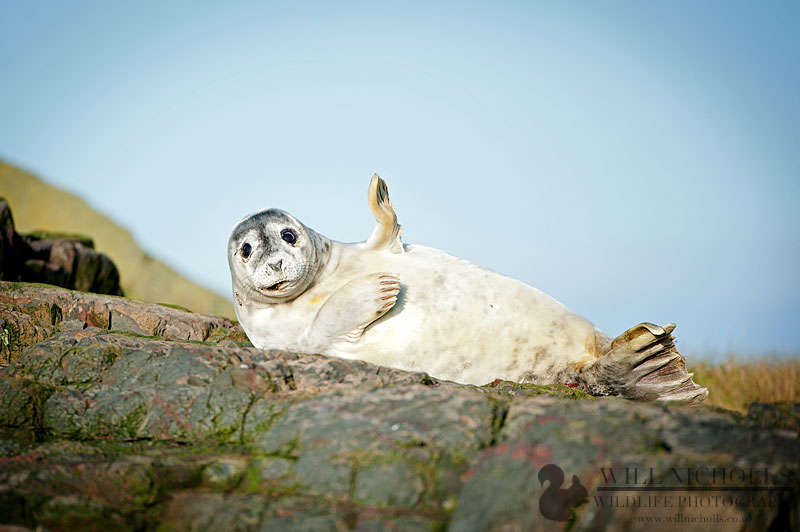The Problem with Giving Your Photos Away for Free

“Hi! Can we use your photo? We’ll give you a credit in our publication, but we have no budget to pay for photos.”
This kind of request has become commonplace in the email inboxes of photographers around the world. They come from journalists, TV companies, magazine editors – you name it. Remember that photo of the weasel riding a woodpecker? It was a once in a lifetime shot and went viral worldwide – and rightly so! Wildlife photographers everywhere went green with envy. Just think how much money the photographer Martin Le-May would have got – easily a dream holiday or a new car. But he didn’t.
Martin posted the picture to Twitter and it was soon picked up by countless press entities. And I mean countless, it was ridiculous. Here’s just one exchange:
@MaxineYGordon yes you may use please credit me and if you could advise of use eg url please
— Martin Le-May (@KingYamel) March 4, 2015
Spotted the mistake? He gave it away for nothing. Martin admits he is an amateur photographer and was thrilled to have so much attention for his photo. It’s completely his choice to give it away for free, I understand that. But this is just one example of many that is causing huge damage to the industry and destroying the livelihood of photographers.
Newspapers don’t work for free. They sell their issues and generate massive revenue with each issue, especially the nationals. Think of all those adverts in them too; do you think you’d get very far if you asked for a free issue, let alone a free advert? The “we have no budget” argument is complete rubbish. They know full well what the reality is for photographers, but they take advantage of amateur photographers who just want to see their pictures in print. The thing is, if they’re willing to print your photos for free, chances are they’ll pay for them too – you just have to know how to stand your ground. Offering to give you credit for “exposure to a big audience” is not them trying to help you out, in fact they’re doing completely the opposite.
[easy-tweet tweet=”Just because a photo is on the internet, it doesn’t mean it’s free to use. Understand copyright!” user=”NatureTTL” usehashtags=”no” template=”light”]
The photography stock industry has been hugely depleted thanks to the rise of micro-stock websites, putting many people out of business or forcing them to exploit different revenue streams. It’s now happening to the publishing industry, at least from a photographer’s point of view. Publications are laughing and rubbing their hands together as images are donated to them by photographers, inadvertently increasing the profit margins of their newspaper or magazine.
And that credit line that you’ve been promised? It does NOTHING. How many people do you know that have ever looked at the minuscule credit line next to a photo in a paper and proceeded to buy something from the photographer. It just doesn’t happen, even on the scale of large publications. I sell pictures to publications and I still get my credit line – but not once has this generated a sale. It’s a completely false economy.

Look at this seal photo. I was originally approached on Flickr by a company asking to use it for a mobile company’s advertising campaign in all 360 of their UK stores. Amazingly, they offered me payment upfront – that’s relatively unheard of nowadays, even from people who intend to pay anyway. They offered me £300 – tempting if you don’t really know about the value of photography, sure. But that £300 offer was relatively insulting, considering they ended up paying £2,500 for the use when I told them I meant business.
Further Reading: “What is Copyright? Understanding Your Rights“
What about working with charities?
This is something that I know photographers disagree with each other about. After all, charities are there (mostly) to do good work. Charities contacting wildlife photographers are usually environmental, looking to promote and protect the natural environment that we take our photos within.
Personally, I choose one charity or cause that I work alongside. I do allow my images to be used for free by them, but that’s because I don’t want to take money away from what I know is already a very strapped-for-cash cause. For me this is red squirrel conservation in the UK. I have had a lot of success from photographing red squirrels, and they’re really on the brink of extinction. It’s effectively my donation to the charity.
On the other hand, I charge other charities for use of my photos. Perhaps I’ll be more flexible with the cost here, especially if it is a cause I believe in. It’s possible that some professionals reading this will disagree with this part of the article, but this is how I choose to work. Even so, working with charities is not the main problem as they aren’t big spenders by nature. It’s working with the media for free that is the problem.
As a photographer, you have a responsibility
The message here is don’t work for free. If you’re asked for free images, just say no and ask for payment. You’re not being greedy by asking, and there’s absolutely no reason why someone else should profit from your hard work. Every time someone gives a photo away for free, it’s a potential sale lost by the professional photography community. Why would publications go to someone who charges for their photos if they can get them for free elsewhere? Obviously there’s no law against giving photos away for free, but next time you’re offered a credit line in exchange for your photo please think about what this means for the industry.





